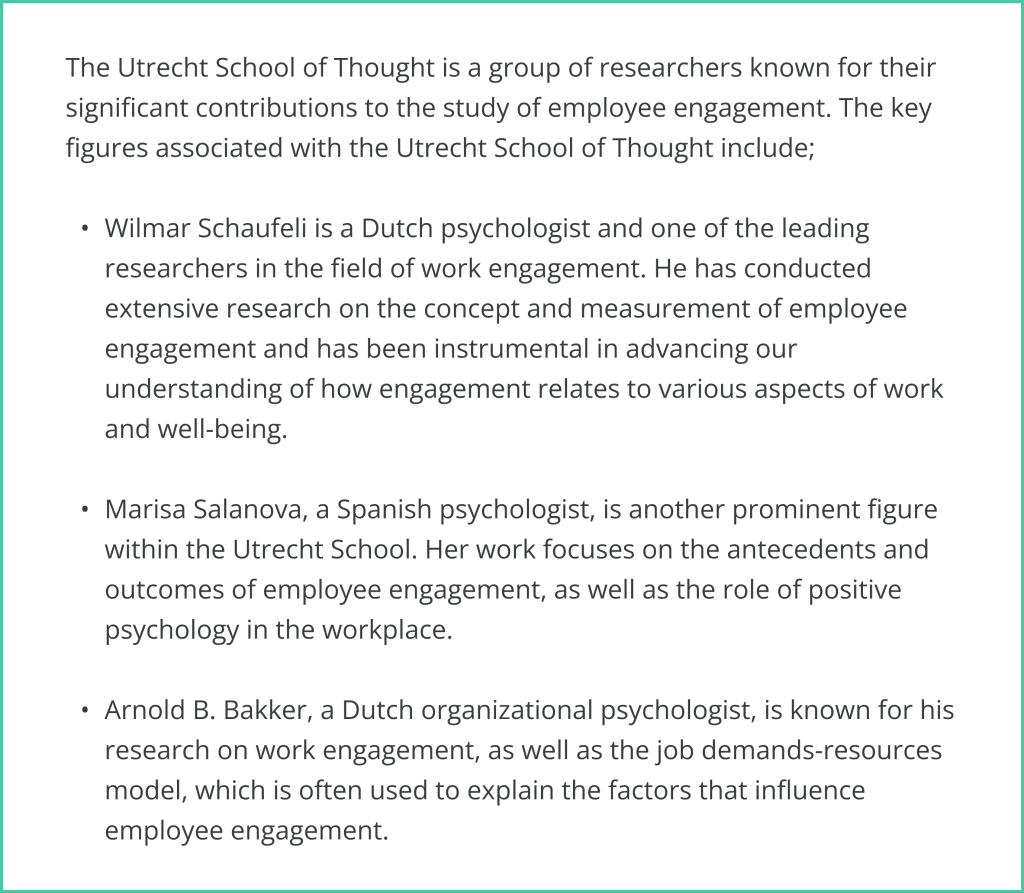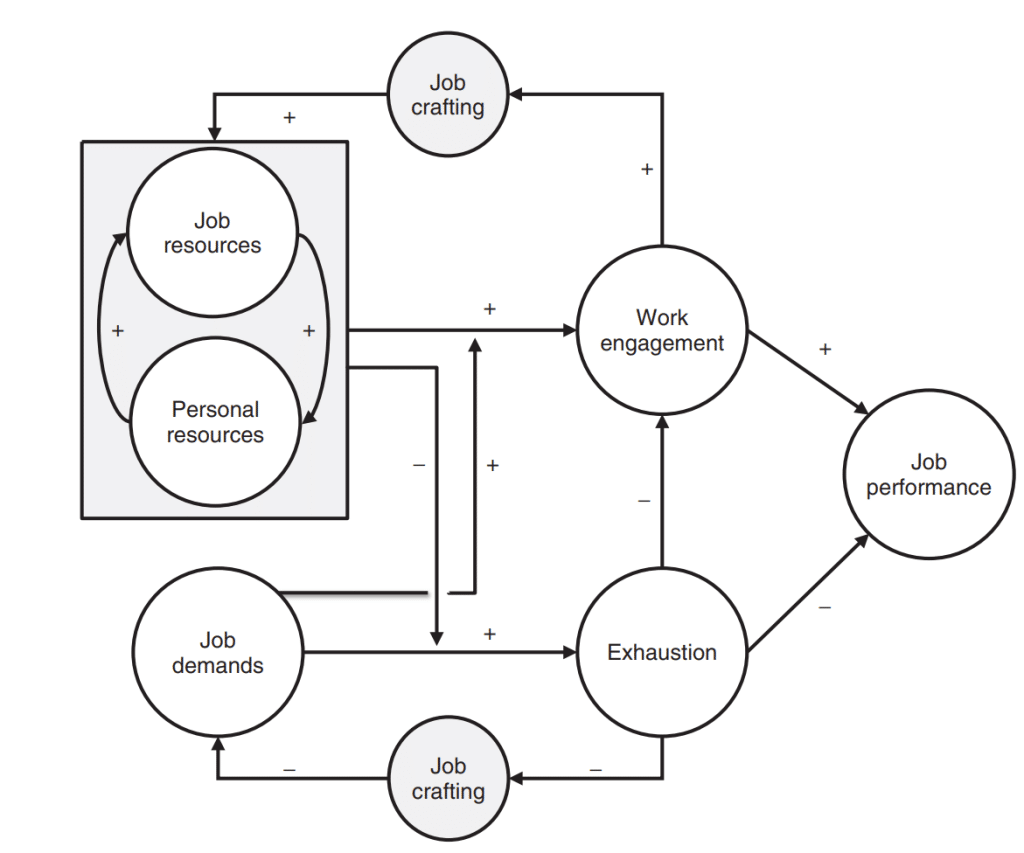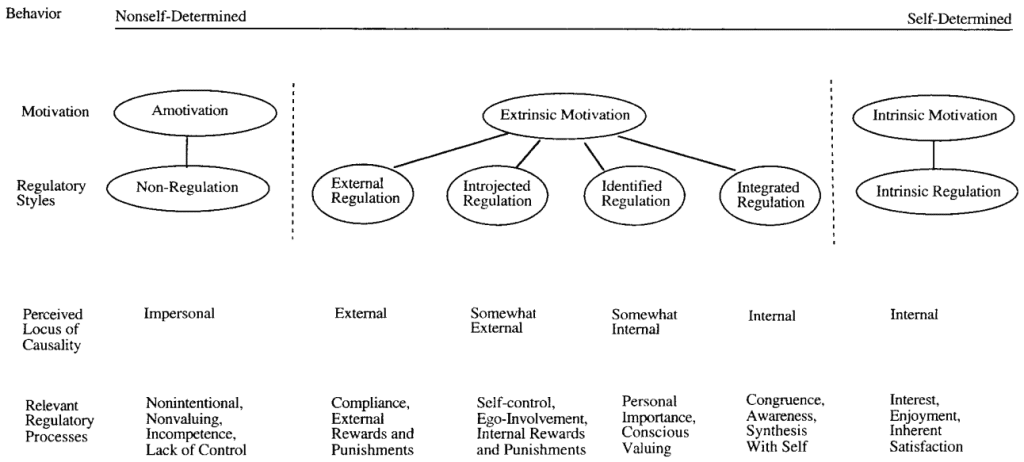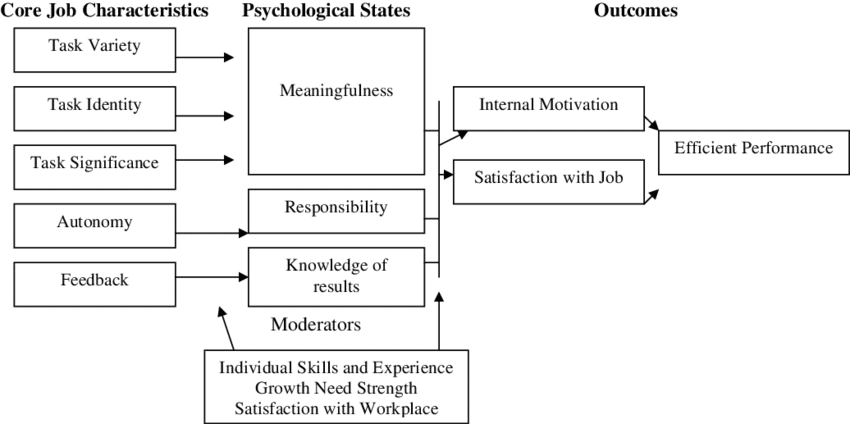We explore the employee engagement framework, including what employee engagement is and how to measure and improve it effectively in your company.
What is Employee Engagement?
An employee engagement definition, in short, refers to the emotional commitment and level of enthusiasm that employees have toward their jobs and their organization. However, this might be an oversimplification. Employee engagement is a multifaceted concept that goes beyond initial impressions.
But, much like the transformation of a simple acorn into a sprawling oak tree, the concept of employee engagement has undergone a remarkable evolution since its early days in the 1990s. It has grown to become not only an academic discipline but a pivotal operational practice in the realm of organizational human resource management.
As it gained widespread recognition, the concept of employee engagement, akin to the branches of an oak, has taken on a multitude of diverse forms and shapes. However, there is a significant departure from the analogy of the oak tree. Unlike the tree’s natural evolution, the concept of employee engagement isn’t meant to outgrow its origins.
With the burgeoning popularity of this field, we witness an unintended consequence—an increase in inconsistency and confusion regarding the application of employee engagement as a means to study well-being within modern organizations.
The very essence of employee engagement becomes obscured in the midst of this transformation, leaving us to grapple with the challenge of aligning its core principles with its expanding interpretations. However, we don’t need a multitude of complex definitions or branches when it comes to employee engagement. What we truly need is clarity. We need to ensure that an evidence-based approach, rooted in decades of well-established research, is easily accessible. Furthermore, we need to bridge the gap between the scientific realm and the practical applications of employee engagement in HR.
This article aims to help you better understand some challenging questions:
What is employee engagement and how can we create a simple way to measure employee engagement effectively?

The Employee Engagement Framework
While simple answers to these intricate questions may remain elusive, our objective is to contribute to the ongoing effort to comprehend employee engagement. We aim to do this by retracing the concept to its origins and provide a systematic overview of how it has been operationalized by different scholars and researchers over the past decades. This, in turn, should pave the way for a more concise framework for proactively, strategically, and operationally addressing employee engagement as a means to nurture happier employees, more effective teams, and enhanced organizational outcomes.
We will delve into some of the most validated constructs and definitions of employee engagement that the academic research field has to offer. This is in pursuit of setting a benchmark by replicating sound, evidence-based approaches and standards from the world of science.
Once we’ve clarified the definitions and constructs, we’ll shift our focus to the practical dimension. Here, we’ll inspire you to implement measurement scales that effectively capture the various facets of employee work engagement while ensuring validity and reliability.
Finally, we’ll wrap it up with insights on how to cultivate and enhance engagement within your organization, enabling you to harness the myriad benefits of high employee engagement.
Why is a clear(er) definition of employee engagement important?
To effectively study and understand any phenomenon, we require clear and unified approaches to grasp that specific subject. In the realm of Human Resources (HR), a precise definition becomes crucial due to variations in understanding among different consultancy branches, HR departments, and top-level executives.
The confusion often arises from whether employee engagement equates to elements like job satisfaction, commitment, or motivation. And when it comes to satisfaction, employee engagement and satisfaction are evidently not the same psychological construct, so merging them in one measure can simply be counterproductive.
But this conceptual ambiguity not only introduces imprecision, but also leads to a view of criticism, with some dismissing employee engagement as a mere rebranding or a superficial trend in HR.
However, employee engagement is not merely another superficial HR concept. The view has led some to argue that ‘the concept of employee engagement needs to be more clearly defined … or it needs to be abandoned’. Skeptics have long argued that the term ‘engagement’ is likely to fall out of usage at some point because it lacks substance or distinctiveness. As well as being challenged for a lack of clear definition, it is also seen to be a relabelling of existing constructs, and thus redundant.
Unfortunately, this criticism sometimes overshadows the importance of employee engagement in thriving organizations, where the neglect of it is more evident than proactive efforts to improve it.
Challenges with composite engagement measures
We stand with CIPD in the discussion on and well-argumented criticsm about how consultancy and management practices often creates more “old wine in new bottles”, “fads and fashions” or “been there, bottled that” – see their discussion report from January 2021.
Because a number of consultancy firms have developed (their “own one-point-of-questionable-truth”) composite measures of engagement along these lines. Gallup’s Q12 is just one example of a tool widely used by consultants and practitioners, but it doesn’t always meet the standards of academic research. Some scholars have raised concerns about its validity and consider it a composite measure lacking in scientific rigor.
When developing a reliable measure, it’s not enough to group survey items together and give them a name. Validation is key. The measure should be tested against similar and different constructs to show it behaves as expected in theory. To put it simply, merging various measures into a single score doesn’t work like magic. It results in a confusing mix of metrics, making it hard to interpret the data.
For instance, when an organization wants to gauge employee engagement, it might involve many aspects such as alignment with company goals, using one’s strengths, satisfaction with pay, and relationships with managers. Combining all of these into one score makes it difficult to understand what’s driving differences or improvements. This could very well be the reason why Bailey et al. (2015), in a systematic study review, chose to exclude studies relying on the Q12 due to concerns that it serves as a broad, all-encompassing measure lacking in validity.
Advocates of composite measures might argue that you can break them down, but this can lead to a loose collection of measures that may not provide clear insights. While it’s understandable that employers are interested in various aspects of employee experiences, it’s crucial for measures to be precise and focused. Often, it’s more effective to consider these aspects individually – especially if you wish to investigate the relationship between engagement and relevant independent variables in a regression analysis (which, essentially, requires the dependent variable to be measured!).
The need for clarity
So. Why was a clear definition and understandable conceptualization important again? Because creating a work environment where employee engagement thrives is crucial for organizations, as it leads to positive outcomes like lower turnover, reduced absenteeism, higher job satisfaction, increased efficiency, and productivity.
To become more data-driven and implement progressive HR initiatives, research consistently emphasizes the significance of employee engagement. It all starts with defining the core concept and how it has evolved over the years in various evidence-based interpretations explored in applied research.
And hence, we move forward to where we position ourselves, when we assist, consult, advocate and what-not our clients about employee engagement. A definition. A clear one that’s scientifically grounded.
Employee engagement definition – origins and evolvements of the concept
Although different conceptualizations and definitions of employee engagement have evolved over the last couple of decades, there seems to be widespread agreement that William Kahn was the founder of the first definition of engagement.
William A. Kahn is an organizational psychologist known for his pioneering work in the field of employee engagement. He is often credited with coining the term “employee engagement” in the early 1990s. Kahn’s research focused on the psychological and emotional connection that employees have with their work and their organization. He was the first to propose that engagement goes beyond mere job satisfaction and involves a deeper level of involvement andcommitment to one’s work.

Kahn’s work has had a significant influence on the way organizations understand and manage employee engagement. His research has highlighted the importance of creating a work environment that fosters a sense of purpose, autonomy, and personal fulfillment in employees, ultimately leading to higher levels of engagement and better organizational outcomes.
“One of the most commonly applied constructs to understand and measure work engagement, here we go!”
Wilma Shcaufeli undoubtedly led the way for more contemporary research on employee engagement, and was heavily inspired by Kahn, but with a desire to make the concept of engagement more meaningful, operational and measurable, the Utrecht School of Thought was born.

Beginning from the late 1990’s, Wilma Schaufeli wrote his article “Job demands, job resources, and their relationship with burnout and engagement: A multi-sample study,” which was published in 2001.
This article is often considered one of the foundational works that contributed to the development of the concept of work engagement, but Schaufeli (together with the Utrecht Group) continued to research and write extensively on employee engagement and its related concepts in the following years, significantly contributing to the field.
The Essence of Workplace Engagement: Defining Vigor, Dedication, and Absorption
“The Utrecht Group, headed by Wilma Schaufeli, defines work engagement as a positive, fulfilling, work-related state of mind that is characterized by three key elements: Vigor, dedication and absorption”
Vigor refers to a high level of energy and mental resilience while working. Engaged individuals feel enthusiastic and are willing to invest their efforts in their work. They often exhibit a sense of physical and emotional strength in their job tasks.
Dedication involves being strongly committed to one’s work and experiencing a sense of significance, enthusiasm, and challenge in the tasks performed. Engaged individuals feel a profound connection to their work and a sense of pride in what they do.
Absorption refers to being fully engrossed in one’s work, where time seems to pass quickly because individuals are so focused and deeply concentrated on their tasks. Engaged employees often experience a flow-like state, where they lose track of time because they are so immersed in their work.
This definition emphasizes the positive and fulfilling nature of employee engagement, contrasting it with burnout or disengagement (considering these two as the antithesis of work engagement).
It’s a state where employees feel energized, committed, and fully absorbed in their work, which can lead to improved performance, job satisfaction, and overall well-being.
With this clear definition of the concept, and as a result of almost 30 years of research, one of the most applied and commonly used measurement scales to assess and understand work engagement was developed: The Utrecht Work Engagement Scale (UWES), which today exists in a 3, 9 and 17-item scale. Later in this article, we present how the UWES measures work engagement more in depth.
What are the key factors of Work Employee Engagement? – A theoretical background
Yawn, right? Theories can be tedious.
Well, if that’s your opinion, I couldn’t disagree more. Well-tested and approved theories are like the captivating origin stories in the Marvel Universe—they expand our understanding of complex constructs and their evolving interactions over time.
You don’t need to wade through hundreds of pages of research to grasp the “bigger picture” of key factors in workplace engagement. We’ve done the heavy lifting for you. Consider this your go-to YouTube video before watching “Marvel: Endgame”—a quick recap of it all.
We present and describe these theories because they are crucial to understanding the key factors that foster the highest level of work engagement in your organization.
The antecedents of employee engagement are factors or drivers that determine the individual level of employee engagement.
Over the years, we have seen several theories and models that examine the drivers of employee engagement within solid scientific frameworks. While the specific factors that are most significant can vary depending on the organization and context, some common themes and drivers that are often associated with higher employee engagement.
The Job Demands-Resources Model (JD-R)
The Job Demands-Resources Model (JD-R) was developed by two Dutch organizational psychologists, Arnold B. Bakker and Evangelia Demerouti. They introduced this model in the early 2000s to explain the relationship between job characteristics, employee well-being, and work-related outcomes, including employee engagement. The JD-R Model suggests that there are job demands (aspects of the job that require effort) and job resources (aspects of the job that help with coping and achieving goals) that impact employee engagement and overall well-being. The model has become widely recognized and influential in the field of occupational psychology and organizational behavior.
The model understands demands as workload, stress, management expectations, role expectations and organizational goals (there is more), whereas job resources are understood as autonomy, social support, supportive leadership and recognition.

Self-Determination Theory
We also need to highlight the groundbreaking work leading to the Self-Determination Theory (SDT). Self-Determination Theory (SDT) was developed by Edward L. Deci and Richard M. Ryan, who are psychologists from the University of Rochester in the United States.
They introduced SDT in the early 1980s as a framework for understanding human motivation and the factors that drive individuals to take initiative, make choices, and pursue personal goals.
SDT emphasizes the importance of the three basic needs of 1) autonomy, 2) competence, and 3) relatedness as essential psychological needs that influence human behavior and well-being. Over the years, SDT has become widely influential in various fields, including education, psychology, and organizational behavior. When it comes to employee engagement SDT (over-simplified) proposes that employees feel engaged, when they feel they have choices, can excel at their tasks, and have positive relationships at work.

The Social Exchange Theory
The Social Exchange Theory was developed by George C. Homans, an American sociologist. He first introduced this theory in the 1950s. Social Exchange Theory is a sociological and psychological framework that explains social interactions and relationships based on the idea of individuals engaging in exchanges of resources, favors, and benefits with the expectation of reciprocity and mutual gain. It has since become a fundamental concept in the fields of sociology and psychology, particularly in understanding human relationships and behavior in various social contexts.
In an organizational context, this theory emphasizes the reciprocity of relationships. When organizations invest in their employees through opportunities, rewards, and support, employees are more likely to engage reciprocally by committing to the organization.
The Job Characteristics Model
The Job Characteristics Model was developed by Richard Hackman and Greg Oldham, two organizational psychologists. They introduced this model in the late 1970s as a way to understand how specific aspects of a job’s design influence employee motivation and satisfaction. The model focuses on five core job characteristics and their impact on employee outcomes, such as job performance and job satisfaction.
The Job Characteristics Model has been influential in the fields of organizational behavior and human resource management, providing insights into how job design can enhance employee engagement and well-being, from where this model suggests that job design plays a crucial role in engagement. Key factors include skill variety, task identity, task significance, autonomy, and feedback. When jobs are enriched with these characteristics, engagement tends to be higher.

Why is employee engagement important? (the positive consequences of employee engagement)
I once read a wonderful phrase on why employee engagement is important, not only for organizations, but also for the individual;
“If you cast light on something, it will grow”.
I couldn’t agree more. And the same agreement seems to be found in over 30 years of research. Employee engagement provides positive outcomes and advantages for the organization, such as lower levels of staff absenteeism and turnover. And although some argue that the relationship between performance and engagement is reciprocal (hence, higher engagement leads to better performance, but better performance could very well be engaging to experience) research reveals that staffwork engagement plays a mediating role in the impact of various factors on performance outcomes.
Studies show that workplace engagement also acts as a mediator in the relationship between several variables, including leader-member exchange, prosocial involvement, higher resilience in busy periods, job crafting, creative performance and extra-role behaviors like knowledge-sharing and innovation.
Zooming in on more “critical organizational outcomes” there seems to be a lot of support that higher engagement is a predictor of several noteworthy outcomes among staff members. First, it results in increased job satisfaction, as engaged employees derive greater meaning and fulfillment from their work.
This heightened satisfaction often translates into improved performance, with engaged employees demonstrating higher levels of productivity and efficiency. Furthermore, employee engagement fosters a culture of creativity and innovation, as engaged staff are more likely to generate fresh ideas, contributing to the organization’s growth and competitiveness.
Additionally, high engagement is associated with lower turnover rates, as engaged employees are less likely to leave the organization, reducing the costs and disruptions associated with recruitment and training. It also enhances employee well-being by reducing stress and burnout, resulting in improved mental and physical health.
Moreover, lower absenteeism is a byproduct of high engagement, as employees are more committed to their work and less likely to be absent, leading to increased workforce availability.
Finally, engagement supports learning and development efforts by making employees more receptive to growth opportunities, which, in turn, enhances their skills and career progression, making them more adaptable in a constantly evolving business landscape.
An overview of key factors of workplace engagement
From research that builds on grounded theories in the work engagement literature, we’ve discovered that various factors have the potential to influence employee work engagement. These factors can vary from person to person and from one organization to another. What works for one team in one organization may not work for another—hence, the age-old saying when dealing with theoretical assumptions: “Well, it depends…”
That’s precisely why it’s vital not only to assess your workplace engagement but also to gain a better understanding and a clearer picture of all the potential factors that fuel employee engagement. It’s akin to an X-ray at the hospital; you’re scanning everything to pinpoint and identify engagement barriers and risks. You wouldn’t want to leave out critical information from your engagement survey.
So, without further ado, here’s a theoretically backed, comprehensive overview of the most crucial factors—or antecedents—contributing to employee engagement:
- Supportive Supervisors: Guidance, support, and encouragement from supervisors are invaluable.
- Clear Company Vision: Employees understanding the company’s vision and objectives provides them with a sense of purpose.
- Autonomy: Allowing control and decision-making over work can be empowering.
- Feedback and Evaluation: Constructive feedback and performance evaluations facilitate personal and professional growth.
- Job Role Clarity: Well-defined roles and responsibilities make objectives more understandable.
- Skill Development: Opportunities for skill development through training and development programs are significant resources.
- Career Advancement: Opportunities for advancement are motivating.
- Social Support: A positive and supportive work environment boosts motivation.
- Recognition and Rewards: Acknowledgment and rewards for contributions enhance morale and motivation.
- Job Security: A sense of job stability and long-term prospects reduce anxiety.
- Work-Life Balance: Supporting a healthy balance between work and personal life reduces stress and enhances well-being.
- Competitive Compensation: Fair pay and benefits are essential.
- Health and Wellness Initiatives: Fitness and mental health resources promote well-being.
- Adequate Tools and Materials: Resources that enable effective work.
- Comfortable Working Environment: Ergonomic workspaces enhance employee well-being.
- Effective Communication: Open, transparent, and effective communication keeps employees informed and aligned with company goals.
- Right Tools and Technology: Access to tools and technology boosts productivity.
- Meaningful Work: Contributing to a larger purpose is a powerful engagement factor.
To identify the key drivers for your specific situation, conducting regular employee surveys and assessments is immensely helpful. These insights will guide you in taking the right steps to boost staff engagement. Remember, it’s often a combination of factors from different theories working together that create a highly engaged team.
How to measure employee engagement – backed up by science, powered by Woba
We already praised the work of the Utrecht Group earlier in this article, and it would be foolish not elaborate how they measure work engagement in their top-notch measurement scale.
The Utrecht Work Engagement Scale (UWES) includes questions designed to measure the three core aspects of employee engagement. Here are examples of how some of the questions may look:
Vigor (Energy and Resilience):
- “I feel bursting with energy at my job.”
- “I am enthusiastic about my tasks at work.”
- “I can keep focused on my work for long periods.”
Dedication (Sense of Significance):
- “I find my job meaningful and significant.”
- “I’m proud of the work I do.”
- “I feel a strong sense of belonging to my organization.”
Absorption (Being Immersed in Work):
- “I get carried away by my work.”
- “I feel like time flies when I’m working.”
- “I’m fully concentrating on my tasks.”
These are examples of statements used in the UWES to assess different dimensions of employee engagement. Employees typically respond to these statements on a scale, indicating the extent to which they agree or disagree with each statement. The UWES aims to capture the overall level of engagement by assessing these specific dimensions, providing insights into employees’ attitudes and behaviors at work.
And as you made it this far, we strongly believe that you deserve some sort of prize for your stickiness. So. here you go. Free download on our white papers on how to measure engagement with UWES:
Employee Engagement Strategies in HR
In terms of recent developments within the field of HR, predictive analytics and data-driven decisions are growing in popularity – for almost obvious reasons.
Predictive analytics in HR is a crucial tool for understanding and anticipating various aspects of human resources. In the HR context, predictive analytics allows organizations to establish connections and foresee outcomes related to workforce management – like employee engagement, job satisfaction and turnover.
These models employ statistical and data-driven techniques to analyze historical data and identify trends, patterns, and relationships between different HR variables. For example, predictive analytics can be used to forecast employee turnover, recruitment needs, and performance, among other HR-related outcomes.
How to improve Employee Engagement
By harnessing predictive analytics, HR professionals can make more informed decisions, create proactive strategies, and ultimately enhance employee engagement, lower turn-over costs and generate higher organizational performance. This approach in HR provides a structured and evidence-based way to gain insights into the dynamics of the workforce and use these insights for strategic decision-making.
These key drivers of work engagement should be prioritized for intervention or further exploration, as significant predictor variables that are statistically significant increase the potential of substantial impact on work engagement.
Which in every way is the final touch to why having clear measurements to begin with is alfa-omega…
Ready to Elevate Your HR strategy?
Woba’s vision is to create a better world to work in by revolutionizing your HR landscape. We help HR departments and leaders worldwide in measuring, predicting, and taking action on the risk of talent loss and absenteeism.
Our passion lies in empowering you within HR to become the central driver of business impact. Using Woba, you can transform employee surveys into proactive action plans, measure the ROI of your initiatives, and align them with your most crucial HR KPIs.
Schedule a meeting with me to explore how Woba can help you achieving your company’s most ambitious HR objectives-













